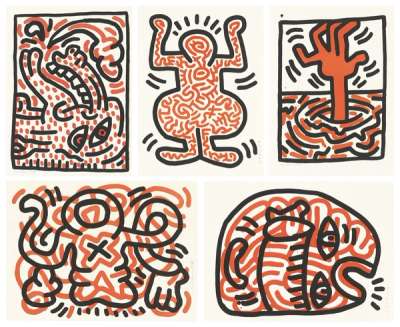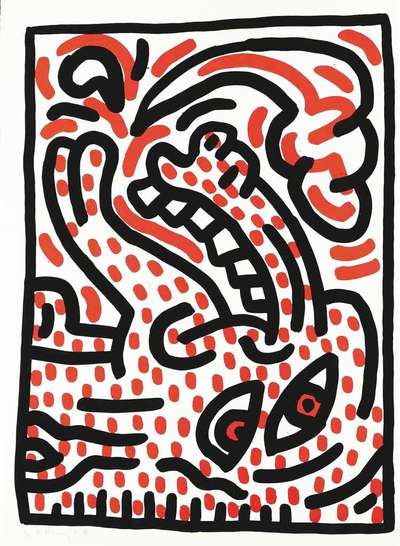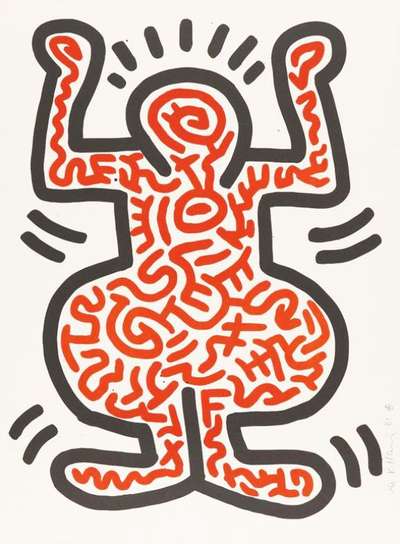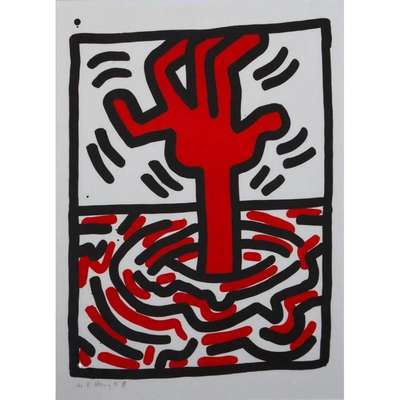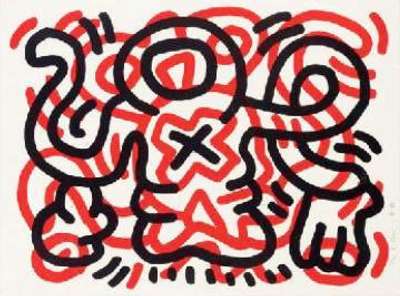
Ludo 2

Ludo 2
Signed Print
Keith Haring
£7,500-£11,500Value Indicator
$15,000-$24,000 Value Indicator
$14,000-$21,000 Value Indicator
¥70,000-¥110,000 Value Indicator
€9,000-€13,500 Value Indicator
$80,000-$120,000 Value Indicator
¥1,460,000-¥2,230,000 Value Indicator
$9,500-$15,000 Value Indicator
AAGR (5 years) This estimate blends recent public auction records with our own private sale data and network demand.
There aren't enough data points on this work for a comprehensive result. Please speak to a specialist by making an enquiry.
Medium: Lithograph
Edition size: 90
Year: 1985
Size: H 48cm x W 66cm
Signed: Yes
Format: Signed Print
Track this artwork in realtime
Watch artwork, manage valuations, track your portfolio and return against your collection
Track auction value trend
Auction Results
| Auction Date | Auction House | Location | Hammer Price | Return to Seller | Buyer Paid |
|---|---|---|---|---|---|
| October 2020 | Forum Auctions London | United Kingdom | |||
| April 2020 | Doyle Auctioneers & Appraisers | United States | |||
| November 2019 | Swann Galleries | United States | |||
| June 2015 | Ketterer Kunst Hamburg | Germany | |||
| April 2008 | Doyle Auctioneers & Appraisers | United States |
Meaning & Analysis
This signed lithograph from 1985 is a limited edition of 90 from Keith Haring’s Ludo series. Ludo 2 (1985) shows an image of a circular figure with unusual facial features. Set against a plain white backdrop, a frenzy of red lines fills the dark outlines of the figure, working to produce an abstract and ambiguous image.
Haring’s print is reminiscent of Aztec or Aboriginal art through his use of flowing, organic shapes and thick bold lines to create a pattern that plays out across the image surface. Explaining why many of his works resemble Aztec or Aboriginal art, Haring has said “My drawings don’t try to imitate life; they try to create life, to invent life,” something that he believed aligned with so-called primitive ideas. Ludo 2 is exemplary of this notion by forming a rhythmic, kinetic composition that focuses on pattern rather than realism.
Throughout the Ludo series, Haring maintains a dominance of the colour red, depicting eyes, limbs, and other body parts in abstracted forms. There is a sense of anxiety running through each print that differs from much of his earlier work, alluding to a turning point in Haring’s life. As the AIDS epidemic overwhelmed his community in the mid-1980s, Haring’s work began to reflect the difficulties he was facing in his personal life.
